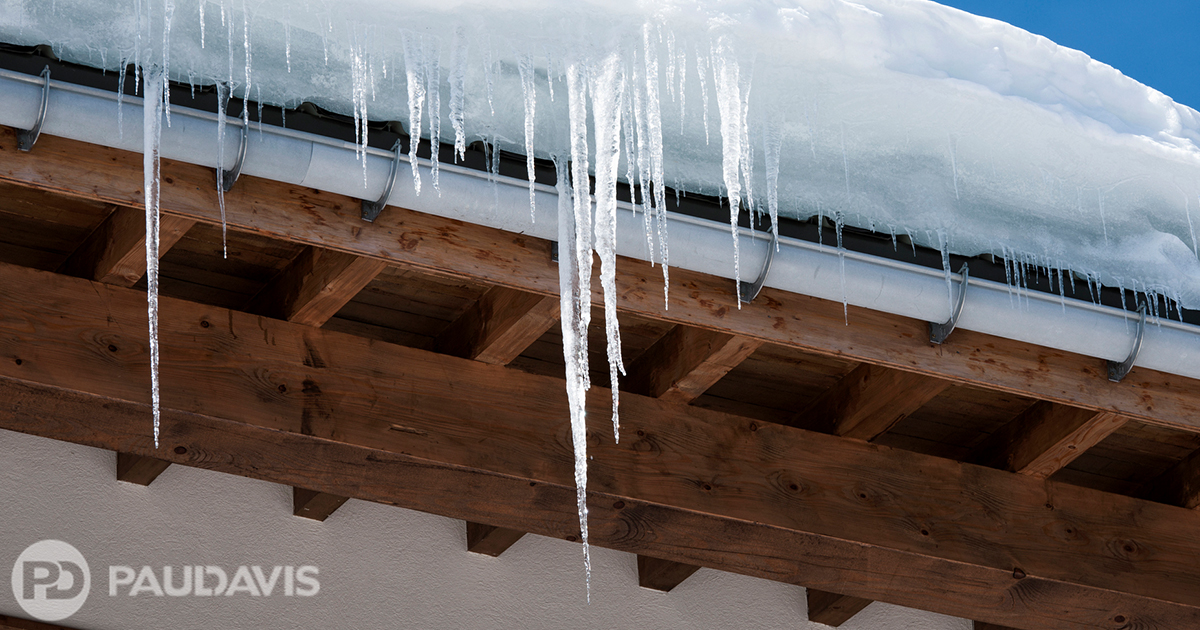
Water: we can’t live without it. But at home, we have to treat it with respect and control it carefully. “Obviously, we need water to drink, wash, cook, heat with and more,” explains Caleb Brunz, President of Paul Davis of Greater MSP, MN. “But we have to manage its location, effects and transport very carefully. It’s particularly important to understand how the freeze-thaw cycle affects homes and properties.”
What is the freeze-thaw cycle (FTC)?
As water drops below 0 degrees Celsius, water molecules align into six-sided crystalline structures. This alignment is less dense than liquid water – which is why ice floats in water – and takes up more space than liquid water. In fact, water expands nine percent in volume when it’s frozen.
This expansion pushes on everything it touches. As FTCs occur over and over, repeated expansion progressively breaks apart materials in which water is trapped. This is also why frozen pipes burst: there is nowhere for extra volume to go.
Do I need to worry about FTCs on my property?
Do you live in a part of the continent that drops below 0 degrees Celsius? The answer is yes. Interestingly, those living further north have fewer issues with FTC damage because fewer cycles occur each winter. Temperatures drop early in winter and remain below freezing more consistently. If you live in an area that moves back and forth across the freezing point frequently, FTCs are a bigger concern.
What parts of my home are affected?
FTCs tend to damage concrete and other hard building materials that are porous and allow water to infiltrate: foundations, stucco siding, chimneys, walkways and driveways. Pipes are at risk, too, if they are not properly insulated against the cold.
How can I prevent and minimize FTC damage?
Prevent FTC damage by keeping water from penetrating your building materials:
- Keep foundations dry. Grade soil to channel water away from foundations and ensure downspouts do the same.
- Fix drainage problems that cause standing water in yards, patios and landscaping.
- Patch cracks in foundations, driveways, siding and chimneys.
- Inspect at-risk areas before winter begins, repair as necessary and maintain them carefully.
- Use snow and ice melt products judiciously. They increase the number of FTCs.
“It’s a fun fact that water doesn’t always freeze below 0 degrees,” says Brunz. “It can become a supercooled liquid if the mineral content is extremely low, for instance, or there’s nothing for the crystalline structure to build around,” Brunz says. “But we aren’t likely to encounter such unusual conditions. For homeowners, the temperature to watch for on the thermometer is 0!”
